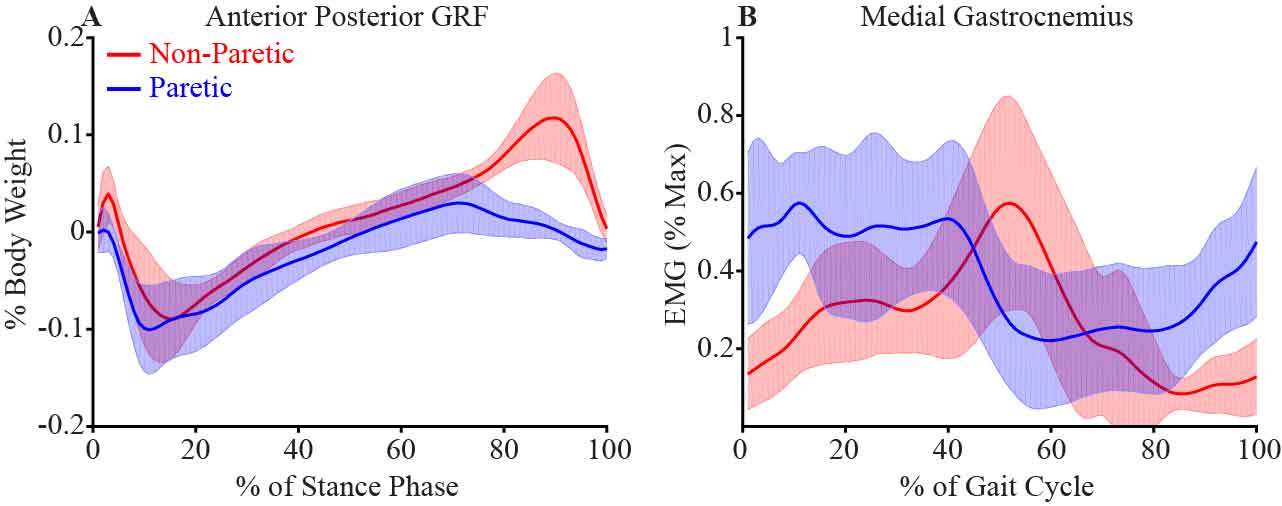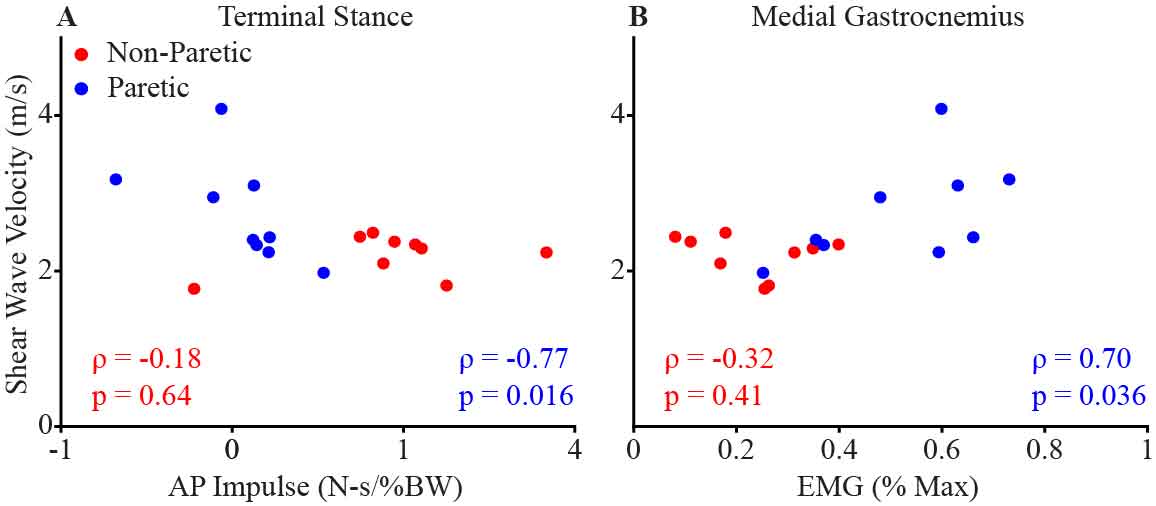Presenting Author:
Kristen Jakubowski, MEng
Principal Investigator:
Sabrina Lee, Ph.D.
Department:
Physical Therapy and Human Movement Sciences
Keywords:
Muscle stiffness, medial gastrocnemius, shear wave elastography
Location:
Ryan Family Atrium, Robert H. Lurie Medical Research Center
C105 - Clinical
Does muscle stiffness influence impaired gait in stroke survivors?
Although impaired motor control contributes to limited mobility, changes in muscle material properties such as stiffness, can also influence force production and transmission. Using shear wave (SW) ultrasound elastography, SW velocity can be used as a surrogate measure for muscle stiffness, such that SW velocity is greater in stiffer tissue. From previous work, knowing that SW velocity in passive stroke-impaired muscle is greater than in non-impaired muscle, we sought to gain insight into how changes in stiffness of lower extremity muscles contribute to gait. The aim of this study was to determine the relationship between SW velocity in passive paretic and non-paretic ankle plantarflexor muscle (medial gastrocnemius, MG) and joint kinematics and kinetics during gait. Fourteen stroke survivors participated in this study (age: 60.15.9yrs; Fugl-Meyer: 8-28, 19.16.1). Subjects were seated with their knee in maximum extension and their foot secured to a platform of a dynamometer (System3Pro, Biodex). B-mode and SW elastography ultrasound images (Aixplorer, SuperSonic Imagine) were captured, as well as joint angle and torque at different ankle angles (90, 15 plantarflexion (PF), maximum dorsiflexion (DF), maximum PF, and two other intermediary angles) while the muscle was passive. Gait analysis was conducted on nine of these individuals during over-ground gait at preferred gait velocity (motion capture system (Qualysis, Göteborg, Sweden), 30 reflective markers set, five force plates (AMTI, Watertown, MA). Electromyographical data was collected. The data was not normally distributed, so a Spearman Rho regression analyses were performed to evaluate the relationship between SW velocity and joint kinematics and kinetics and EMG. All correlations occurred at multiple ankle angles, but only results at 15 PF are reported here. We found significant differences kinematics and kinetics, such as greater anterior-posterior (AP) propulsive impulse during terminal stance on the non-paretic side (p=0.004). More importantly, we found as the AP propulsive impulse decreased during terminal stance, SW velocity in the MG of the paretic side increased (ρ=-0.77, p=0.016). We also found a significant increase in the magnitude of EMG firing in the MG during the first phase of the gait cycle on the paretic side (p=0.003). With increased magnitude of EMG firing in the MG, SW velocity increased on the paretic side (ρ=0.7, p=0.036). Our findings indicate that following a stroke, individuals that have an increase in passive stiffness tend to have decreased propulsion during a crucial stage of the gait cycle. Additionally, the increased firing during the early stages of the gait cycle may occur to overcome increased passive stiffness. These results suggest that altered material properties of the MG affect the gait of stroke survivors. Patient-specific information on muscle properties would give clinicians the ability to develop and refine novel rehabilitation and treatments.


